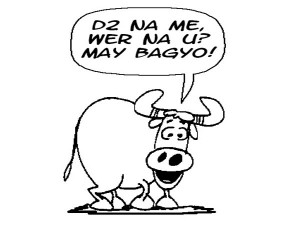IT expert creates mobile app to warn fisherman-father of bad weather

Now the hard part is teaching the 53-year-old tuna fisherman how to use a cell phone.
Rulete, 28, is the creator of a mobile application for the government’s flood and weather forecasting tool, Project Noah, or Nationwide Operational Assessment of Hazards, a two-year public-private venture powered by Smart Communications Inc.
The Department of Science and Technology (DOST) and Smart launched Wednesday the mobile app developed by Rulete to provide cell phone users on-time information on the weather, including information on the track of storms and the intensity of rains.
The mobile app is available initially only on Android smartphones and tablet computers, but developers are working on versions for Apple and Nokia software.
At the launch of the project at the Philippine Atmospheric, Geophysical and Astronomical Services Administration (Pagasa) Science Center, Rulete demonstrated how to navigate the app, basically a miniature version of the Noah website.
Rulete, who grew up in Bislig, Surigao del Sur, but now lives in Davao City, donated the rights for the mobile app to Project Noah in the hope the technology would be made available to more people, among them his own father, Mamerto.
“I was motivated to develop this app because I knew it could really be helpful to fishermen like my father,” he said in an interview.
Navigation training
Rulete, a computer science graduate from the University of Southeastern Philippines in Davao City, said most fishermen depended only on television or radio for information on the weather, putting them at risk as they spent whole days out at sea.
He said that in the 1980s an uncle, also a fisherman, went missing in stormy waters, and was never found.
Now Rulete is training village officials in coastal communities, like his hometown, in navigating the Noah mobile app to send out warnings and alerts to fishermen at sea.
“My father is not very good with cell phones and computers, and I think other fishermen are like [him],” Rulete said.
‘Apptivists’
Smart public affairs head Ramon Isberto said Rulete belonged to a new breed of IT technicians called “apptivists,” or people “who were generating applications for innovations for social good.”
“His heart is in the right place… His father is a fisherman so he is very sensitive to weather, and because his father is always at the mercy of the weather,” Isberto said.
Until Wednesday, Noah was available only on its website noah.dost.gov.ph. But now, with the mobile app, Android users can access weather information on the fly.
Public information
Since July, Noah has been giving the public access to information taken from the weather bureau’s Doppler radars, satellite imagery, rain and stream gauges, and other forecasting tools in real or near-real time.
Noah’s objective is to improve rain and flood forecasting through speedier and more accurate reporting and wider dissemination of weather information.
Using the mobile app, cell phone users can access Noah’s data taken from a variety of tools, including satellite images, rain and stream gauges, and Doppler radars.
A separate app called “Flood Patrol” enables smartphone users to report flooding in their areas, including the time and date, location and depth of the flood. They can also post pictures and view the reports of other users.
Crowdsourcing
Reena Estuar, research director of the Ateneo Java Wireless Competency Center, said the app was a way of “crowdsourcing” flood information, which, in time, could be used for simulations of flooding in different parts of the country.
“Project Noah is not just one website,” said Raymund Liboro, director of the DOST’s Science and Technology Information Institute.
“The website is only the visualization of all those data. All the equipment, sensors, come into play when you see one of those pop-ups. If you click one and the data show up, but it’s not that simple,” he said.
Recalling the monsoon surge in August, Liboro said Pagasa had been able to warn Marikina residents immediately.
“We knew how high the water would rise, when it would rise, and how fast,” he said.
Future of communication
Liboro said social media had proven to be very useful tools in disseminating weather data.
“We think it will be the future of communication and information,” he said.
“Project Noah’s mission is to use advance science and technology for the government to come up with best solutions, tools, and programs that will prevent and mitigate disasters,” he said.